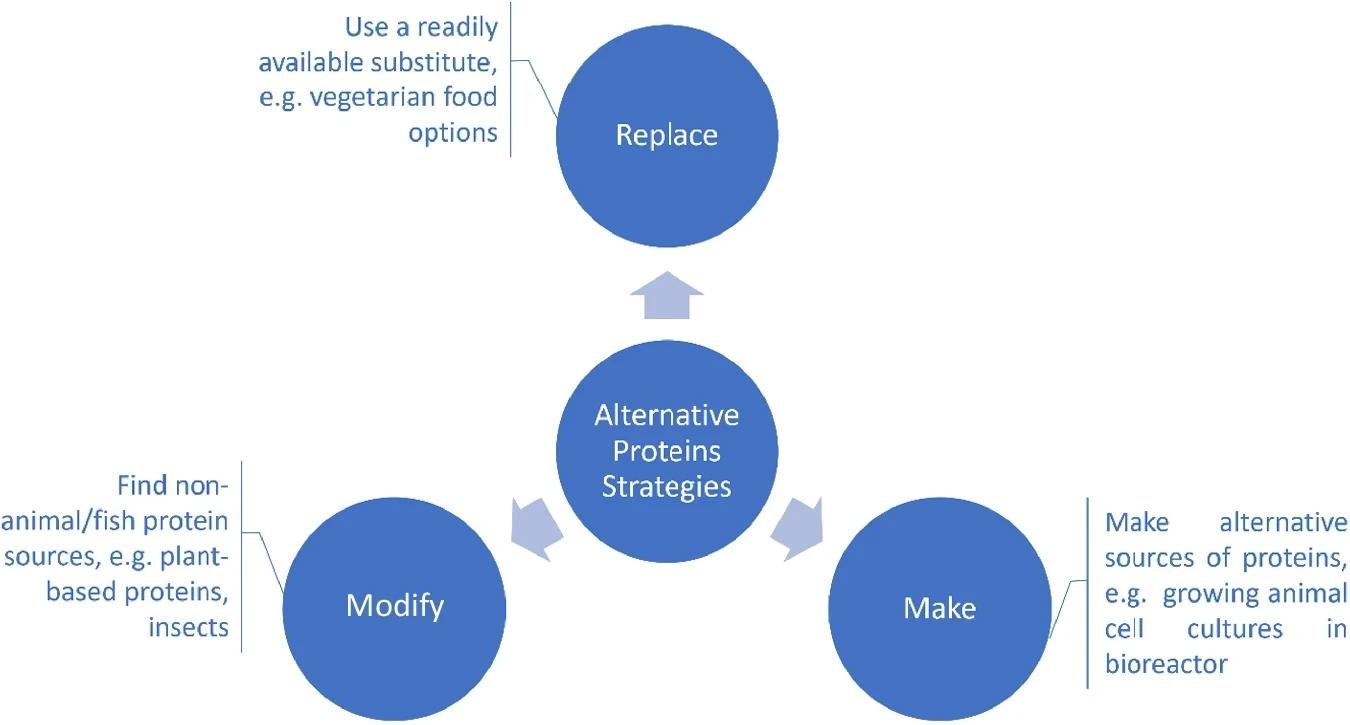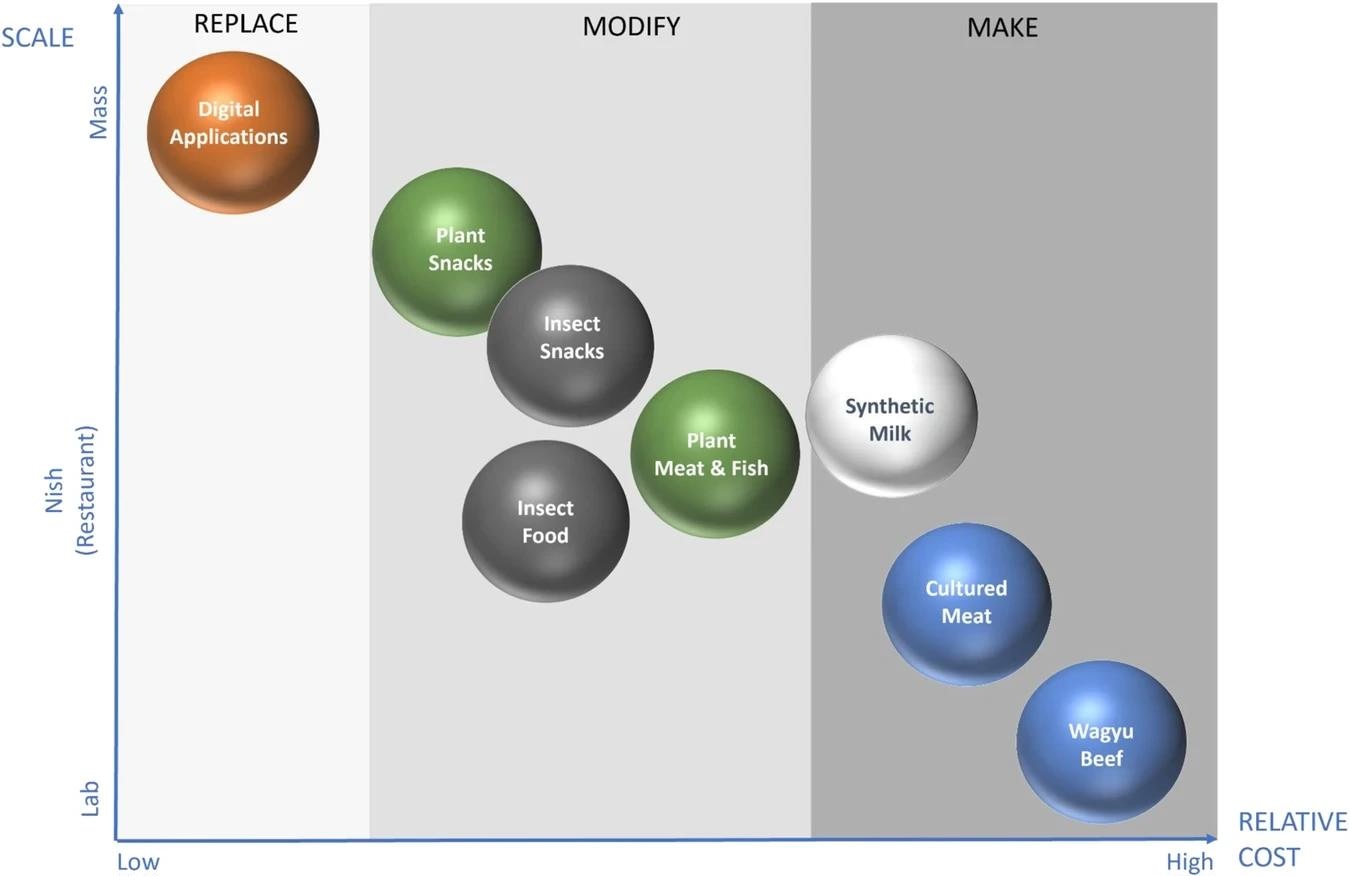The global challenge of feeding a projected 10 billion people by 2050 amidst climate change and crop diseases requires increasing food production by 50% over the next 25 years.
Previous research, including the World Resources Report, has identified several solutions, including reducing food demand growth, increasing production without expanding agricultural land, protecting ecosystems, boosting fish supply, and reducing agricultural greenhouse gas emissions.
Addressing these issues requires innovative technologies such as precision agriculture, genetic modifications, and alternative protein sources.
However, translating these technological advancements into commercial applications is crucial and often spearheaded by startups and university spin-outs.
Despite significant efforts, there remains a gap in effectively scaling these innovations, particularly in developing and commercializing alternative protein sources to meet the protein demands driven by differing dietary trends in low and high-income populations.
This review focused on the latest advancements and the commercial application of alternative protein sources to tackle the food security challenge.
An ecosystem of startups
This author, Elena Lurie-Luke of the Department of Biosciences, Durham University, UK, used startups as a data source to gauge advancements in alternative proteins due to their agility and innovation.
Unlike traditional reviews focused on production methods or specific protein sources, this approach addresses alternatives to animal/fish-based proteins through three strategies: replacing existing items with available substitutes, modifying existing non-animal proteins, and creating new proteins using technologies like three-dimensional (3D) bioprinting and precision fermentation.
Market penetration of these alternatives depends on scalability and cost. To illustrate this, startups were selected based on their protein offerings, technological approaches, and active status and categorized into Replace, Modify, and Make pillars.
These startups were analyzed for their scientific basis, product development stages, and key challenges, providing a comprehensive view of the alternative protein ecosystem.

A problem-solving innovation strategy approach was used to design the startups eco-system. The problem to solve is to find an alternative to animal/fish-based proteins and when it comes to finding an alternative, there are three main options to consider: (1) using a replacement, (2) modifying existing non-animal/non-fish sources of proteins, and (3) making an alternative source of proteins. (1) Replace: this option involves using a readily available substitute for the target compound, e.g., current vegetarian diet options. (2) Modify: this option looks at modifying existing non-animal/non-fish sources of proteins to substitute the target compound, e.g., insect-based protein. (3) Make: This option comes from a product innovation standpoint, providing the most potential, while holding the biggest challenges. It includes using novel technological processes to make proteins, e.g. 3D bioprinting, cell-cultured products, precision fermentation etc.
Replacing meat proteins
The "Replace" strategy involves using non-animal-derived existing ingredients that can substitute animal and fish proteins. While this approach might not seem highly innovative, it leverages modern advancements in machine learning and digital databases.
Machine learning algorithms can design plant-based food substitutes by analyzing extensive data on food composition, nutrition, and recipes. For instance, some startups have developed tools that leverage artificial intelligence (AI) to convert any recipe into a plant-based version by simply entering it into a search box on the website.

Assuming the same consumer perception of different alternative proteins products, their market penetration would primarily depend on their scalability (ability to move from niche to mass market without compromising quality) and cost (at least parity to the animal/fish-based protein products). These two parameters were used to map market the penetration potential of different alternative protein options using current market examples. Note: products examples are intended to illustrate a relative position and presented in a non-scale format.
Utilizing non-animal protein sources
The "Modify" strategy utilizes existing non-animal protein sources, such as plants and insects.
Insects, consumed by around two billion people globally, are a sustainable protein source because they require fewer resources and have less environmental impact. Insect-based foods are gaining traction in Western markets, and the edible insects market is projected to grow significantly.
Some companies are expanding through strategic partnerships and innovations like vertical farming and Clustered Regularly Interspaced Short Palindromic Repeats (CRISPR) technology. Government support is also helping scale this industry. Despite the benefits, challenges remain in consumer acceptance and ensuring food safety.
Humans have long consumed plant-based proteins, and modern processing technologies have enhanced their appeal as meat and dairy alternatives. The market for plant-based meat analogs (PBMAs) and dairy alternatives (PBDAs) is expanding, driven by startups and large food companies.
Innovations like 3D bioprinting and texture improvement techniques address plant-based foods' sensory and structural challenges. Despite advancements, challenges include allergen concerns, flavor enhancements, and the need for comprehensive safety data.
Development of lab-grown meat
The "Make" strategy focuses on producing lab-grown meat, which involves cultivating animal cells in bioreactors. This method has progressed significantly, with several companies developing cultured meat products like chicken or beef.
However, lab-grown meat faces hurdles such as regulatory approval, high production costs, and sensory acceptance. Innovations in 3D bioprinting and precision fermentation aim to overcome these challenges.
These technologies promise to reduce environmental impact and improve sustainability but require significant investment and infrastructure development.
Conclusions
New technologies are advancing alternative protein sources to address food security and environmental challenges by reducing emissions and land use. The alternative protein ecosystem is evolving through innovative approaches to replacing, modifying, and making protein sources.
Each strategy has unique benefits and challenges, from leveraging AI for plant-based substitutions to pioneering lab-grown meat technologies. The success of these alternatives will depend on overcoming technical, regulatory, and consumer acceptance barriers.
Alternative proteins, including insect-, fungi-, plant-based, and cell-based (cultivated meat and fish) proteins, have seen significant growth, with products now available in stores and restaurants.
However, challenges remain in consumer acceptance, affordability, and market accessibility due to high production costs, scalability issues, and regulatory hurdles.
Addressing these challenges involves interdisciplinary research, new partnerships, global alliances, and continuous investment. Government and non-government organizations are forming collaborations to support innovation and regulatory work, fostering startup growth and breakthrough innovations.